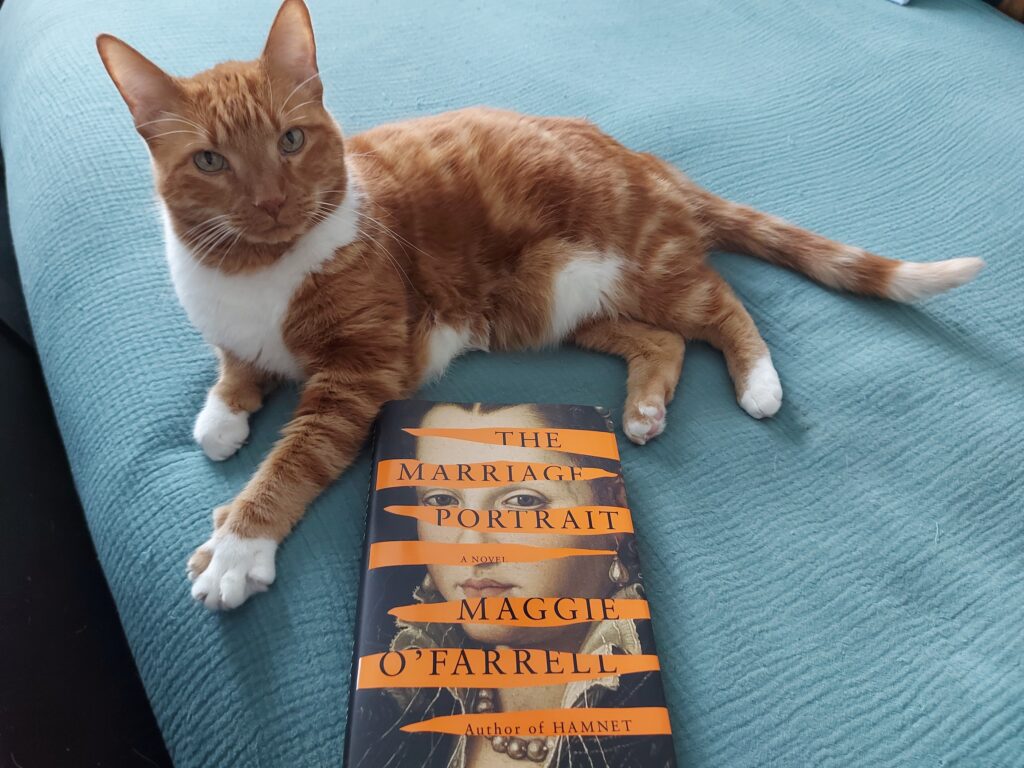The Marriage Portrait by Maggie O’Farrell

I think fans of historical fiction will love Maggie O’Farrell’s The Marriage Portrait. One of the year’s more buzzed about releases, The Marriage Portrait is set in 1550’s Florence and is inspired by the short life of Lucrezia de ’Medici, who was married at age 13 to Alfonso, Duke of Ferrara, Modena and Reggio, and died at age 16. The official cause of her death was “putrid fever”, but it was rumoured that her husband murdered her. The Marriage Portrait is a well written and immersive novel, but how does it feel to read a novel knowing that the main character died young in real life? I spent the entire time reading The Marriage Portrait in nervous anticipation of Lucrezia’s death, but also hoping that O’Farrell would change the fictional Lucrezia’s fate and give her a happy ending.
Lucrezia de ‘Medici was the fifth (legitimate) child of Cosimo I de’ Medici, Duke of Florence, and his third daughter. When the reader is introduced to Lucrezia in The Marriage Portrait, she is already 16 years old and knows that her husband is planning to kill her. Then the novel jumps back and forth between her past and the present, allowing the reader to gradually uncover how Lucrezia’s life led to the point of her husband wanting to kill her.
Lucrezia is different from her siblings; she keeps to herself, has an affinity for animals and is very imaginative. She is a talented artist, and the reader experiences the world through her artist eyes. Renaissance Italy is vividly rendered as Lucrezia takes in her surroundings at the palazzo where she grew up, on the road to Ferrara after her marriage (her first time outside of her father’s palazzo) and at the homes of husband. Lucrezia was not originally intended to marry Alfonso. Her older sister, Maria, was supposed to marry him, but she died before the marriage could take place. Then Alfonso said he would marry Lucrezia instead. The fictional Lucrezia is unprepared for marriage, which is most likely not the case in real life. The concept of childhood as we know it did not exist in the 1550s, and Lucrezia would have been brought with the intention of being the perfect wife for a duke and to be married off as soon as soon she starts to menstruate.
Lucrezia does not know how to handle her husband, who at first is very solicitous towards her and seems to be very much in love, but it is not long before he begins to show his dangerous side. Alfonso does not like being told what to do, he does not like being talked back to and he will go as far as murder to command the respect that he thinks he deserves. O’Farrell imposes modern sensibilities on the fictional Lucrezia, who thinks that her husband should treat her as his equal, as her own father seemed to treat her mother, not realizing that her parent’s relationship is very much an anomaly at the time. Lucrezia has a fiery side to her that speaks out against the injustices that she witnesses, but she learns the hard way that she should keep that fire locked inside of her and play the submissive wife instead.
When Lucrezia fails to become pregnant, Alfonso begins to lose patience with her (because heaven forbid anyone tell the Duke the reason she is not pregnant is most likely because he is impotent), and Lucrezia begins to fear for her life. But she has no one that she can turn to. She writes to her mother begging for help, but her mother either does not believe her, or just does not care. Considering how women are treated like goods to be bartered, and how, in real life, one of Lucrezia’s sisters and her cousin were also rumoured to have been murdered by their husbands, I suspect that as soon as Lucrezia’s family married her off, they washed their hands of her.
While most women during Lucrezia’s time might have felt powerless to prevent themselves from being abused or murdered by their husbands, Lucrezia uses her fiery nature to fight back. But is it enough for her to survive? I think you should read The Marriage Portrait to find out.